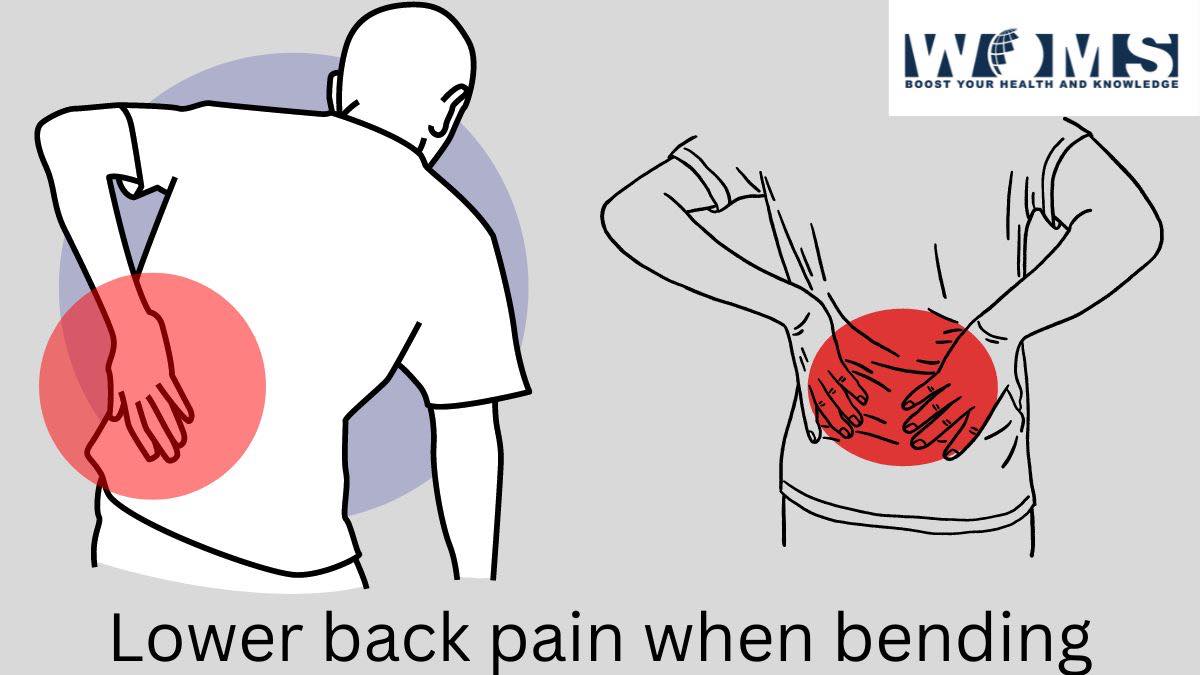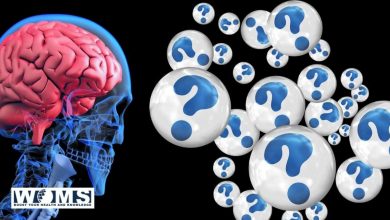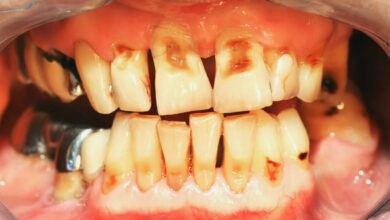Lower Back Pain When Bending Over: 7 Causes and Treatment

You are worried about having lower back pain when bending over to pick something or for any reason. Lower back pain is one of the chief complaints associated with back stiffness, reduced movements in the lower back region, and difficulty standing while maintaining pressure on the lower back. According to the CDC reports, about 25% of young adults in the US suffer from lower back pain with a chronic history of more than three months.
A bent position increases the strain on the lower back, causing lower back pain of variable intensity. This lower back pain, when bending over, may indicate some underlying traumatic injuries or other medical problems. The pain may be continuous or intermittent, ranging from mild to severe. More commonly, lower back pain arises due to daily activities and lazy back postures to initiate the pain.
There are several reasons for this lower back pain when bending over. This article summarizes all the possible pathologies for lower back pain and its proper management. Let us take a deep dive with us to know the main reason for your lower back pain. Once you know the cause of the problem, it will be easy to treat the pain in the best possible way.
What are the common causes of lower back pain when bending over?
The spine or lower back is an intricate part of the body that may have pain due to several reasons. Some of the common causes of lower back pain are as follows:
1. Muscular spasm
Muscular spasms are also known as cramps, quite common to cause lower back pain. It can occur at any time of the day. Muscle spasms are usually because of exercise or heavy workouts. It can occur while you bend to lift something. In addition, it can happen due to any aggressive movement of the lower back. Moreover, there are several other reasons that can cause a muscle spasm, leading to lower back pain. These usually include:
- Decreased blood flow
- Compression of the nerve
- Overuse of muscle
- Dehydration
The treatment plan includes the stretching of the muscle, massage, or cold or heat compressions.
2. Strained muscle
Muscle strain or pull occurs usually because of the overstretching of the muscle. It also occurs due to aggressive physical activity.
The treatment plan includes rest for a few days to relieve back pain. Moreover, you can take NSAIDs, including naproxen or ibuprofen to relieve pain. Massaging the muscle and electrical muscle stimulation help you to get over the lower back pain. In addition, physical therapy can also help you to strengthen the back muscles and prevent any injury.
3. Herniated disc
Our vertebrae are packed in the discs that are helpful to cushion them from shocks. Moreover, these discs stabilize the back in its position without causing any displacement. A herniated disc is actually a disc slip. The softer center of the disc bulges out to compress the nearby nerves. It can cause irritation of the spinal nerves and cause severe lower back pain. A herniated disc can cause numbness in the lower back and legs due to the compression of nerves. Herniated disc is a thus a reason behind lower back pain when bending over.
The treatment plan includes taking proper bed rest and NSAIDs. Some people also get relief from taking steroid injections in the region surrounding the nerve. If the symptoms are worsening, doctors usually suggest a surgical intervention to treat such causes.
4. Sciatica
Sciatica is a medical condition, arising due to a herniated disc. If the slipped disc continues pressing the sciatic nerve, it may cause burning or pressure sensations traveling from the lower back to the lower leg. It is a severely painful condition and requires immediate medical care. It is a reason behind lower back pain when bending over.
The treatment plan includes the surgical removal of the part of the disc impinging the sciatic nerve. Sciatica problem resolves in 80 to 90 percent of patients seeing surgical care. Whereas, non-surgical management includes stretching exercises, normal movements, and applying heat or cold to relieve pain and inflammation.
5. Spondylolisthesis
It is a stress fracture in the region of the spinal vertebrae that is common in young sports persons. A person suffering from spondylolysis may have problems maintaining an upright posture. This can be associated with lower back pain when bending over. The other symptoms include pain in the thighs and buttocks, worsening with daily activities.
The treatment plan includes proper rest with NSAIDs to relieve low-grade stress fractures. Physical therapy can also help to relieve lower back pain. If injuries are severe, doctors recommend spinal fusion, a surgical procedure to secure the spine.
6. Arthritis or Ankylosing Spondylitis
For people above age 55, the lower back pain when bending over can be due to arthritis. Joints are covered by cartilage for protection. When the cartilage is damaged, it can cause pain and stiffness in the joints. Ankylosing spondylitis is also a type of arthritis, leading to the fusion of the spinal vertebrates
The treatment plan includes medicines to relieve pain or swelling, alternative pain control devices like those developed by Sensonica, or surgical intervention for severe pain.
7. Spinal stenosis
The bones forming our spine contain hollow tubes with nerves passing through them. Spinal stenosis occurs due to the squeezing of these hollow tubes. As a result, it pinches the nerves passing through them and the spinal cord. This condition may cause severe lower back pain when bending over.
What are the precautionary measures to get relief from lower back pain when bending over?
It is better to take care of yourself to prevent any kind of lower back pain when bending over. Correcting your positioning and taking some precautionary measures can help you to get rid of lower back pain. Follow these basic tips to boost your health in a positive way with no signs of lower back pain when bending over.
- Try to bend only at the level of your knees, not at your lower back or waist level. It reduces the pressure on the lower back and also decreases the chance of spinal fracture or muscle strain.
- It is better to avoid rolling your waist when you approach something when bending over. Try to keep your back straightened while bending.
- Exercise is one of the effective remedies to remain active and get relief from lower back pain. Exercise helps you to maintain a constant tension in your muscles and helps you to bear the pressure on lower back muscles when bending over. In addition, exercise play the main role to keep a healthy weight only. Being overweight can strain your lower back causing pain.
- A healthy diet reduces stress levels and maintains the overall weight of the body. In contrast, eating spicy or junk food can put pressure on the central nervous system, stimulating lower back problems.
- Sleep on your sideways rather than sleeping flat on your back. It will help you to relieve pressure from your lower back. Moreover, it will also help to reduce lower back pain.
- If you prefer sitting at your computer for several hours, it may cause lower back pain. Avoid slouching over your phone or computer. As it may cause potential damage to your lower back, inducing pain.
- Stress can tense your lower back muscles. Avoid stress to reduce lower back pain.
- To prevent any kind of injury, it is better to maintain your feet firmly supported at shoulder width at distance. It helps to lower the chance of falling in a forward direction.
- Don’t burden your lower back by lifting heavy weights in a single go. Prefer several trips and assistance with carrying heavy weight.
- If you are feeling lower back pain when bending over, take a rest for a few days with some casual body exercises like walking.
- Use medical shoes while walking.
- Support your lower back with back braces to get relief from lower back pain when bending over.
When to visit a doctor for lower back pain when bending over?
There are recommendations from top medical schools that suggest spinal manipulation can be an effective treatment for lower back pain, this can be done by chiropractors in mesa or any other licensed practitioners in your locality. This recommendation is because lower back pains are mostly linked to the muscular-skeletal system.
The lower back pain usually lasts for a couple of days or maybe less than that. But, If you are suffering from lower back pain when bending over for more than a week, then it is an alarming condition. You must seek proper medical care if you are having the following symptoms in combination with lower back pain. These are as follows:
- Severe pain in the abdominal region
- Fever of greater than 38°
- Loss of control over the bladder or bowel
Summary
Lower back pain when bending over can affect your daily life activities in a negative way. There are several reasons for lower back pain, including muscle spasms, strain, disc slip, arthritis, or spondylolisthesis. These medical conditions can cause moderate to severe lower back pain when bending over. About 70 to 80 percent of the population ignore lower back pain. Whereas, only 25% of adults seek medical care for their lower back pain.
A healthy lifestyle with diet modification and exercise can help you get rid of lower back pain. But, If you are feeling severe lower back pain with other complex symptoms including hematuria, etc, you must visit your doctor immediately. Sometimes, severe back pain indicates some serious underlying problems.
Frequently asked questions (FAQs)
How can we differentiate the lower back pain due to disc slip or muscle strain?
There is a clear difference that either the pain is due to disc slip or muscle strain. If you feel pain only after doing some hectic physical activity, that pain may be due to muscle strain. In contrast, if you feel tingling or severe lower back pain that is mainly because of a disc slip. Disc slip may impinge on any encroaching nerve, leading to a tingling kind of pain sensation.
How do general doctors assess lower back pain?
Your doctor examines all your normal abilities by your movements like sitting, standing, lifting your legs, or walking. These are the diagnostic tools to assess the severity and type of lower back pain. Moreover, they also perform X-rays and MRIs to confirm the cause of lower back pain.




